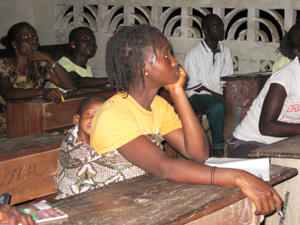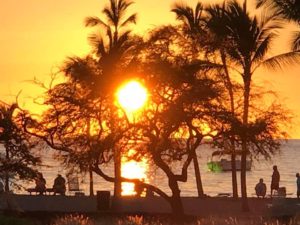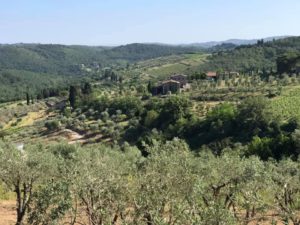Light Gives Students a Chance at Night School


Less than two percent of Liberia’s estimated two million rural dwellers have access to electricity. Most rely on candles or small kerosene lamps to light up their evening activities. But limited lighting impedes chores after dark, prevents post-dusk operation of small businesses, limits the ability of students to study, and contributes to poor security.
At Sanniquellie Central High School, this is no longer a problem. Night School Principal Sylvester Gonquoi unlocks a closet and begins handing out compact fluorescent light (CFLs) bulbs to his teachers. They, in turn, head to their classrooms and screw in a bulb, signaling to the students that evening classes are about to begin. A small roof panel powers the bulbs and four solar street lights, located in each corner of the school’s courtyard.
This solar system was provided through a USAID program with the goal of expanding sustainable energy services to rural communities in Liberia through a portfolio of alternative energy pilot projects.
Night school enrollment has increased by 24 percent since the solar street lights were installed at Sanniquellie Central High School. Most of the 900 night students have day jobs; some are mothers, who bring their babies with them, or pregnant teenagers who are no longer permitted to attend day classes. They come from the town itself and surrounding communities, many walking an hour or more to get to the school. They come in increasing numbers, according to Gonquoi, because of the reliable electricity.
“When we relied on generators, we had serious problems. Fuel and maintenance was so expensive. Once a generator was stolen. We just didn’t have the money for regular night classes. The school was crippled,” said Gonquoi. “The solar lights brought us great relief. Once people know that we have consistent light for classes, they come every time. Women come with their babies and they can do that now because they feel safe.”
The students are no less enthusiastic in their response to the opportunity that night classes have given them.
“When I put my glasses on, I can see the board. Because of your light, I can finish high school,” said 11th grade student Coper Duo. He continues, “I am an elementary school teacher. My kids laugh that I teach them during the day and go to school at night. But when I finish, I will go to university. When I come back, I will be such a better teacher.”
Edith Dehmie , a widow, leaves five children at home when she walks an hour and a half to class. “I don’t have the hand to do anything for myself during the day. I run a small shop in the market and care for my children. But I will now be able to finish my schooling at night class. Then I can better help myself,” she said.
This article from USAID’s “Telling Our Story” here: http://www.usaid.gov/stories/liberia/ss_lbr_nightschool.html









